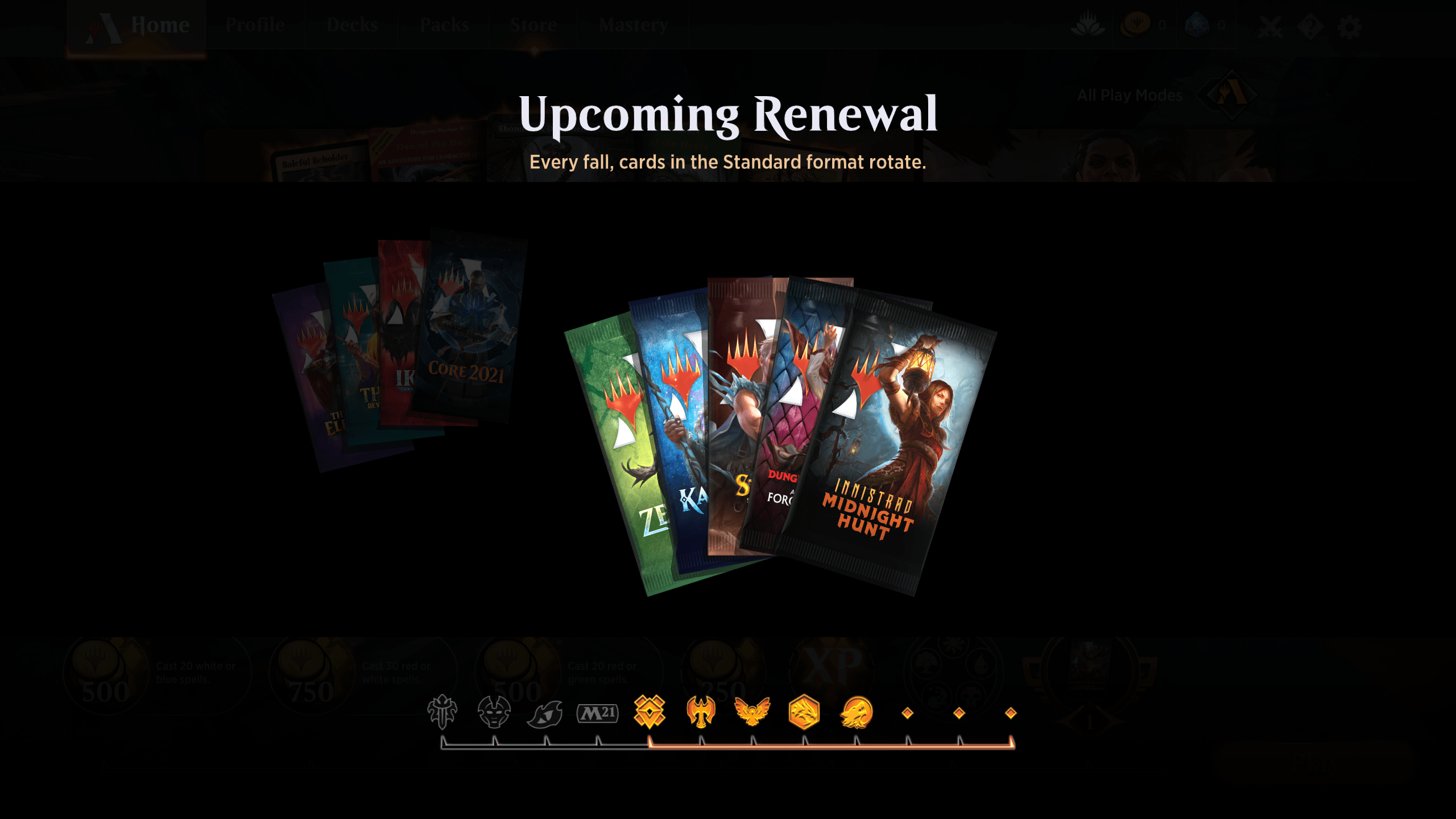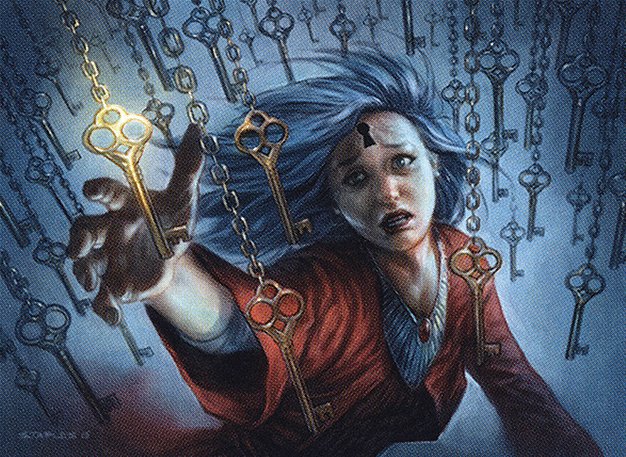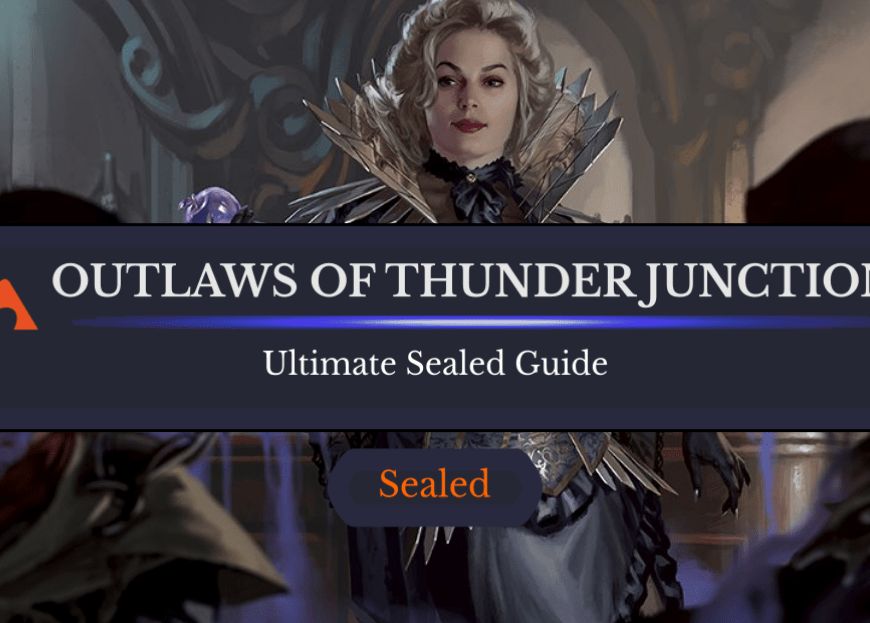Last updated on April 19, 2024

Angel of Renewal | Illustration by Todd Lockwood
Standard is arguably the most popular and widely known MTG format, likely due to its dynamic and evolving gameplay. In it, you use a minimum 60-card deck with no more than four copies of any one card except basic lands from the most recently released sets, created with your wildest dreams in mind. Minus the banned cards, that is.
But what is Standard rotation, and why should you care? Well, read on, as I'll answer both of those questions and much more below!
When Is Standard Rotation?

Growth Cycle | Illustration by Svetlin Velinov
Standard rotation is, quite literally, the rotation of cards in and out of Standard play. When it comes to the schedule, it’s pretty straightforward: every fall, Wizards of the Coast rotates out the current sets of cards that can be used in Standard and replaces them with a handful of new sets.
Quick note, though: Standard skipped the 2023 rotation in order to move sets over to a 3-year rotation cycle instead of a 2-year cycle. More on that later.
Standard rotation allows newer players to access and use recently printed cards without needing to worry about acquiring all the really old rares and expensive stuff. It also keeps the format fresh and interesting.
Understanding Standard rotation is also important for managing your collection so you know when to sell and when to buy. And so you can determine which decks should demand the investment of your hard-earned cash or wildcards on MTGA.
What's in Standard: Current Sets
| Set Name | Release Date | Rotation Date |
|---|---|---|
| Innistrad: Midnight Hunt | September 24, 2021 | September 2024 |
| Innistrad: Crimson Vow | November 19, 2021 | September 2024 |
| Kamigawa: Neon Dynasty | February 18, 2022 | September 2024 |
| Streets of New Capenna | April 29, 2022 | September 2024 |
| Dominaria United | September 8, 2022 | September 2025 |
| The Brothers' War | November 18, 2022 | September 2025 |
| Phyrexia: All Will Be One | February 10, 2023 | September 2025 |
| March of the Machine | April 21, 2023 | September 2025 |
| March of the Machine: The Aftermath | May 12, 2023 | September 2025 |
| Wilds of Eldraine | September 8, 2023 | September 2026 |
| The Lost Caverns of Ixalan | November 17, 2023 | September 2026 |
| Murders at Karlov Manor | February 9, 2024 | September 2026 |
| Outlaws of Thunder Junction | April 19, 2024 | September 2026 |
The Newest Set
The newest MTG set for Standard is Outlaws at Thunder Junction, which was officially released on April 19, 2024.
The Next MTG Set
The next MTG set for Standard will be Bloomburrow, which is to be released on August 2, 2024.
The Next Standard: Rotation in 2024
Here are the sets that will make up the 2024 Standard post-rotation all the way up to 2025's rotation:
| Set Name | Release Date | Rotation Date |
|---|---|---|
| Dominaria United | September 8, 2022 | September 2025 |
| The Brothers' War | November 18, 2022 | September 2025 |
| Phyrexia: All Will Be One | February 10, 2023 | September 2025 |
| March of the Machine | April 21, 2023 | September 2025 |
| March of the Machine: The Aftermath | May 12, 2023 | September 2025 |
| Wilds of Eldraine | September 8, 2023 | September 2026 |
| The Lost Caverns of Ixalan | November 2023 | September 2026 |
| Murders at Karlov Manor | February 2024 | September 2026 |
| Outlaws of Thunder Junction | Q2 2024 | September 2026 |
| Bloomburrrow | Q3 2024 | September 2027 |
| Duskmourn: House of Horror | Q4 2024 | September 2027 |
| “Tennis” | Q1 2025 | September 2027 |
| “Ultimate” | Q2 2025 | September 2027 |
Rotation in Alchemy
Alchemy used to rotate in the same way that Standard does, but not since Standard's switch to a 3-year cycle. The digital-only format will continue to rotate on a 2-year cycle every fall, which is basically just a fancy way to say that Alchemy did not skip its 2023 rotation while Standard did.
2023 Standard Rotation Rules Change
Wizards announced a change to the Standard rotation cycle in May 2023. Basically, sets rotate out every three years instead of every two as of the 2023 rotation cycle.
But don't panic! All that means is that there is no Standard rotation in 2023 so we can catch up, and the next rotation is going to happen in 2024. That's it, just postponing rotation so that sets stay in Standard for one year longer going forward.
This also means that we're going to have more sets in Standard between rotations. Instead of having nine sets in Standard before the next rotation (which would have been the case with a 2023 rotation), we'll instead have a whopping 13 sets in Standard, maybe more if we see a repeat of mini-set The Aftermath when we get to 2024's rotation. Wild.
How to Manage Your Collection for Standard Rotation
Confession time: I’m a card collector. And not even in the cool “I have copies of all these awesome and rare cards” way. It’s almost borderline hoarding, where I buy cheap packs of cards from the dollar store whenever I see them because I don’t care what I get I just want more cards. It’s a weird obsession, and I’m not sure what it is about Magic cards that seem to trigger this in me, because I’ve never collected anything else and I absolutely hate clutter.
That said, I do know a thing or two about finance and trading, which comes in handy for managing your MTG collections. Selling and buying are part of the game for most players, so knowing when to buy new cards and sets and when to sell your old cards is crucial.
On Paper
Right after rotation, most of the popular cards in Standard would have already started to see their value go down. Their demand is mostly tied to their use and legality in this format, after all.
There will be some exceptions, most notably cards that are prominent in Commander or Modern. Other things that affect the price of a card are reprints in new sets or being banned. The more reprints there are, means more of the card exists, and so it’s easier to get a hold of. If the card is banned then it can’t be used so there is less demand and there isn’t much use in paying for it.
When the time comes to rotate it’s best to sell your Standard staples before rotation happens, but not right before. Prices don’t just drop overnight; they usually start to go down leading up to the rotation, so right before probably won’t net you the highest price.
For cards that work in Commander or Modern, these sometimes see a small dip in price right around rotation, but usually rise back up to more than what they were valued at before. So it’s best to hold onto Commander and Modern staples to sell after rotation instead of before.
On Magic Arena
Managing your digital card collection is a lot simpler. You can’t sell your old cards and the only way to get specific cards is by crafting them with wildcards, which you can outright buy, similar to buying singles like you can in paper Magic.
The sets and packs sold through the MTGA client by WotC are digital commodities and, short of limited-time offers, there can be an infinite number sold, so supply and demand don’t really factor in as much. You'll have to settle for using the old cards in Historic or Timeless when Standard rotates.
The best way to manage your collection and keep your spending to a minimum in Arena is by participating in Drafts and events to win free packs and cards to bolster your collection. You can also keep an eye out for discounts and premium bundles in the store that might offer a bunch of stuff for a cheaper total price than if you bought them individually. You can also get free cards and packs by redeeming promo codes.
Renewal Rewards and Events
MTG Arena has a slew of special events and changes to their starter decks each year to help ease players' transition into the new Standard format. This has become pretty normal now, ensuring as smooth a transition as possible over each rotation.

Renewal includes gifting you extra cards, packs from newer sets, and sleeves. Plus the new player decks get an overhaul to make sure they still work in Standard after rotation. These are automatically added to your collection if you already finished the new player experience.
MTGA typically preps you for rotation by no longer handing out ICRs or hosting events of sets that are about to rotate out.
Impact of Rotation on Power Level
Standard is at its most powerful right before rotation, and at its weakest after rotation.
Because new MTG sets are released throughout the year and Standard rotation happens in the fall, there’s a period right after previous sets are rotated out when fewer sets are available for use in Standard. More available sets and thus more available cards offer more opportunities for powerful combinations in deckbuilding.
Rotating Out

Memory Lapse | Illustration by Greg Staples
With all of that said, I'm about ready to wrap this up in a nice little bow and call it done. Standard rotation is a simple concept, but it has some pretty big impacts on Standard play in MTG, both online and in paper Magic. There are plenty of moving parts and lots to look forward to with new sets released every season.
What are some of the things that you’re most looking forward to in Magic this year? Let us know in the comments below, or over in the Draftsim Discord.
And don’t forget to bookmark this page and check back to keep up to date on every Standard set and rotation. See you then!
Follow Draftsim for awesome articles and set updates:


3 Comments
whats funny is that when you describe what standard would be like without a rotation, you basically just describe legacy/vintage. all those problems you mention for 83 sets in standard don’t seem to be a problem for legacy/vintage.
Fair point – I’ve updated the intro accordingly.
Thanks for the explanation. The visual with the icons is a great quick reference.
Add Comment